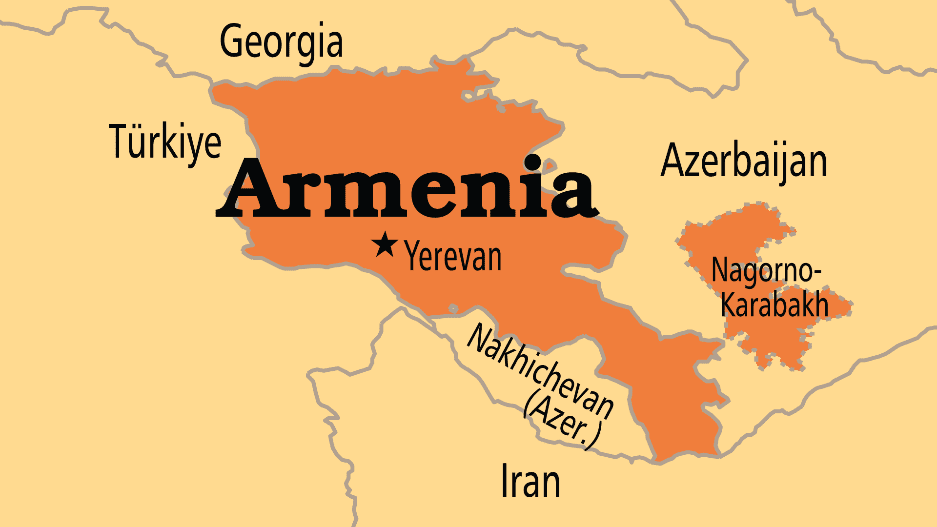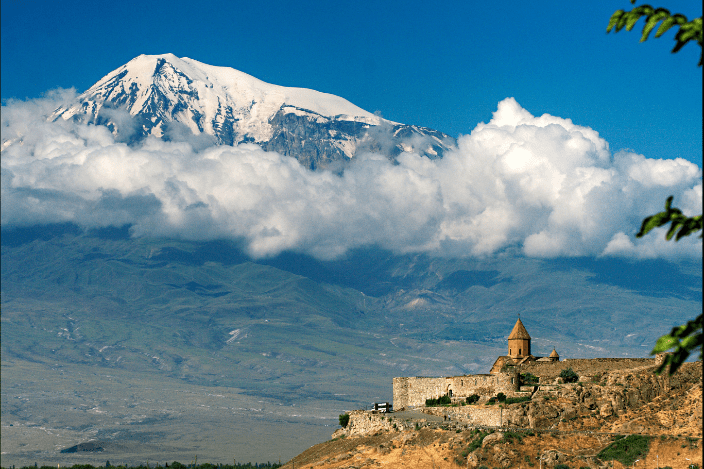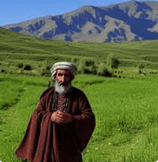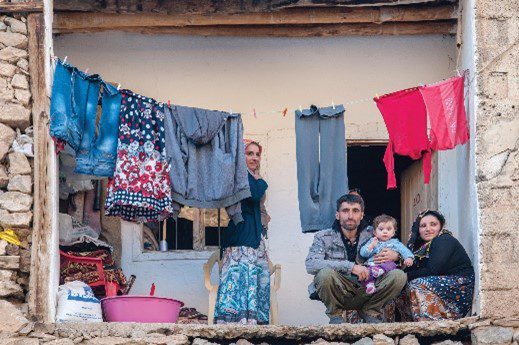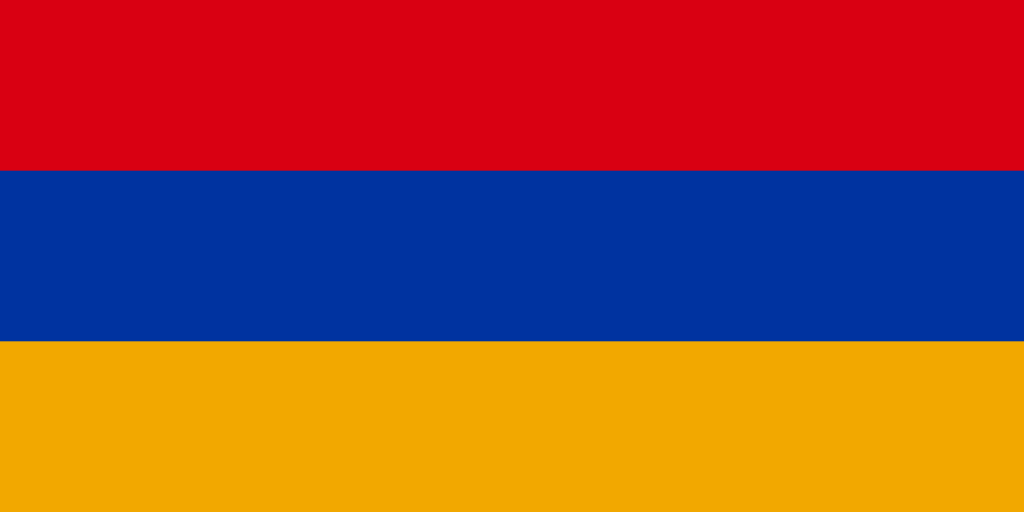
Armenia
Armenia is a developing country and ranks 85th on the Human Development Index (2021). Its economy is primarily based on industrial output and mineral extraction. While Armenia is geographically located in the South Caucasus, it is generally considered geopolitically European. Since Armenia aligns itself in many respects geopolitically with Europe, the country is a member of numerous European organizations.
Armenia derives from the name of Aram, a lineal descendant of Hayk. In the Hebrew Bible/OT the Table of Nations lists Aram as the son of Shem.
Ge 10:22-23 “The children of Shem; Elam, and Asshur, and Arphaxad, and Lud, and Aram. 23And the children of Aram; Uz, and Hul, and Gether, and Mash.”
The Ottoman Empire’s Genocide of the Armenian people: Armenia is a small country whose people have faced intense political violence throughout their history. The Armenian Genocide, committed by the former Ottoman Empire in 1915, claimed an estimated 600,000 to 1.5 million Armenian lives. War and conflict continued with neighbouring Azerbaijan over the Nagorno-Karabakh region, which the Soviet Union controversially placed in Azerbaijani territory despite its Armenian-majority population.
As a result, hundreds of thousands of Armenian lives were lost, and tens of thousands were displaced. Most recently, starting in late 2022, Azerbaijan blockaded Nagorno-Karabakh, sparking more conflict and fears of genocide by starvation. Eventually, in September 2023, the Armenian separatist government in Nagorno-Karabakh announced its dissolution, and nearly 80% of remaining Armenians fled in fear as Azerbaijan seeks greater control of the region.
Armenia’s economy has remained weak and has been made worse by these conflicts as well as ongoing trade conflicts with Turkey. Unemployment and poverty soar at an estimated 20 and 26% respectively. Many working-age people have left Armenia for work abroad, putting increasing pressure on the government’s struggle to fund the pension system, health care, and other services for the growing senior population. Armenia has heavily depended on Russia, both economically and politically—however, Russia has neglected its peacekeeping promises and strengthened its political and economic ties with the Azerbaijani government. The future of Armenia remains very uncertain.
While Armenia prides itself as the world’s first officially Christian nation, the Armenian Apostolic Orthodox Church that represents the vast majority of Armenian Christians remains a mostly cultural rather than spiritual institution. Though “Armenian” and “Christian” are considered synonymous, many Armenians have never heard the gospel.
Typical Faith Statement of the Armenian Church: “The faith of the Armenian Church is transmitted through the Church’s Holy Tradition that is preserved in the ongoing life of the church from the time of Christ to our times. The Holy Tradition of the Church is formulated and rooted in the Holy Bible, liturgy and worship, the writings of the church fathers, church councils, saints, canons, religious art and rituals. The founding principles and faith of the Armenian Church are expressed in the Nicene Creed. The Creed was adopted by the Council of Nicea in 325 A.D. and states that God and Christ are of the same substance. In the Armenian Church, the Creed is recited during liturgy and worship services as a declaration of faith. It is in these articles of faith on which the dogmas of the Armenian Church are based.
Everything in the Apostles’ Creed (≈700 AD) is “sort-of true”, but as with the Nicene Creed (381 BC), what is missing makes ALL the difference concerning the gospel. The gospel of the grace of God by which men are saved today is absent. The Creeds are full of ambiguity and half-truth which got interpreted in different ways. How else could it be agreed upon all the main churches such as Catholics, Anglicans, Lutheran’s, Armenian Church, Presbyterians and all ‘reformed’ churches?
- Fundamental doctrines of Salvation by what? (Baptismal Regeneration vs. Believer’s Baptism)
- Hell (Everlasting Fire vs. OT Hades with its two compartments Paradise and Hell), or maybe even Catholic’s Temporary Purgatory?
- Biblical Ordinances vs. Heretical Sacraments.
- Deity of Christ (Begotten or Created).
- Church (universal body of believers [1Co 12:12] or RC Church?).
- Holy Spirit (Of the Trinity, or merely an impersonal divine force?) etc.
PRAYERS FOR Armenia
- Centuries of bitter conflict, oppression, and massacres left Armenians with hatred and mistrust of their neighbours. From 1915-1917, the Turks killed up to 1.5 million Armenians in a merciless genocide. Conflict with Azerbaijan, from 1988-1994 and then 2020-2023, ended in the cleansing of Nagorno-Karabakh of its Armenian population by the victorious Azerbaijani forces. The attendant accusations of genocide committed by Azerbaijan has chilling resonance with Armenia’s past. Armenians are understandably shaken, especially when its traditional support from Russian melted away, and the world’s focus was on Ukraine and Israel. Pray that the Lord might exercise His power to assert peace over the region. Pray that Armenians might be free from such terrible fear of repeated genocide, and that despite their pain, would learn to forgive.
- The Armenian Apostolic Church has long been a cultural refuge in times of persecution, but the very traditional nature of the Church, which is key to Armenian self-identity, also keeps them from discovering the living Christ. It often inoculates Armenians against the message shared by other Christian groups. Pray for:
- Unity and cooperation within the Church. There are two main groups, tracing back nearly 1,000 years, which use different dialects. Pray that these two (Eastern and Western) will find common ground and the ability to work together for the purposes of God.
- Deep spiritual regeneration of the Church and for godly leaders. This Church will almost certainly remain the dominant religious force in Armenian life. Therefore, pray that there would be a radical transformation therein that sees Christ glorified and many saved.
- An appreciation of, and fellowship with, the smaller denominations in Armenia. Though this is improving, significant suspicion and occasional hostility toward non-Orthodox groups remain.
- The Armenian Church-Loving Brotherhood, an evangelical-oriented movement within the Apostolic Church, was formally founded in 1895. Its main emphases are Bible study groups, personal witness, publishing and distribution of evangelical literature and Bibles, and work among the poor and needy, especially orphans. There are a couple of hundred workers in the movement, with thousands of people associated with it, particularly younger people. Pray for this movement and its influence for good on the nation.
- Centuries of bitter conflict, oppression, and massacres left Armenians with hatred and mistrust of their neighbours. From 1915-1917, the Turks killed up to 1.5 million Armenians in a merciless genocide. Conflict with Azerbaijan, from 1988-1994 and then 2020-2023, ended in the cleansing of Nagorno-Karabakh of its Armenian population by the victorious Azerbaijani forces. The attendant accusations of genocide committed by Azerbaijan has chilling resonance with Armenia’s past. Armenians are understandably shaken, especially when its traditional support from Russian melted away, and the world’s focus was on Ukraine and Israel. Pray that the Lord might exercise His power to assert peace over the region. Pray that Armenians might be free from such terrible fear of repeated genocide, and that despite their pain, would learn to forgive.
- The Armenian Apostolic Church has long been a cultural refuge in times of persecution, but the very traditional nature of the Church, which is key to Armenian self-identity, also keeps them from discovering the living Christ. It often inoculates Armenians against the message shared by other Christian groups. Pray for:
- Unity and cooperation within the Church. There are two main groups, tracing back nearly 1,000 years, which use different dialects. Pray that these two (Eastern and Western) will find common ground and the ability to work together for the purposes of God.
- Deep spiritual regeneration of the Church and for godly leaders. This Church will almost certainly remain the dominant religious force in Armenian life. Therefore, pray that there would be a radical transformation therein that sees Christ glorified and many saved.
- An appreciation of, and fellowship with, the smaller denominations in Armenia. Though this is improving, significant suspicion and occasional hostility toward non-Orthodox groups remain.
- The Armenian Church-Loving Brotherhood, an evangelical-oriented movement within the Apostolic Church, was formally founded in 1895. Its main emphases are Bible study groups, personal witness, publishing and distribution of evangelical literature and Bibles, and work among the poor and needy, especially orphans. There are a couple of hundred workers in the movement, with thousands of people associated with it, particularly younger people. Pray for this movement and its influence for good on the nation.

